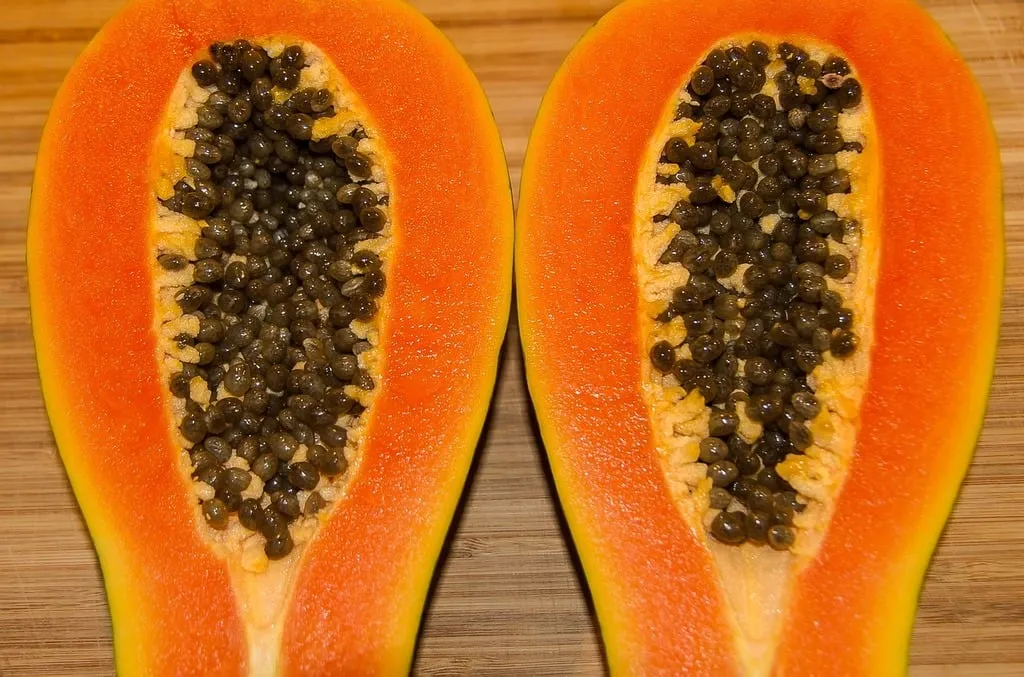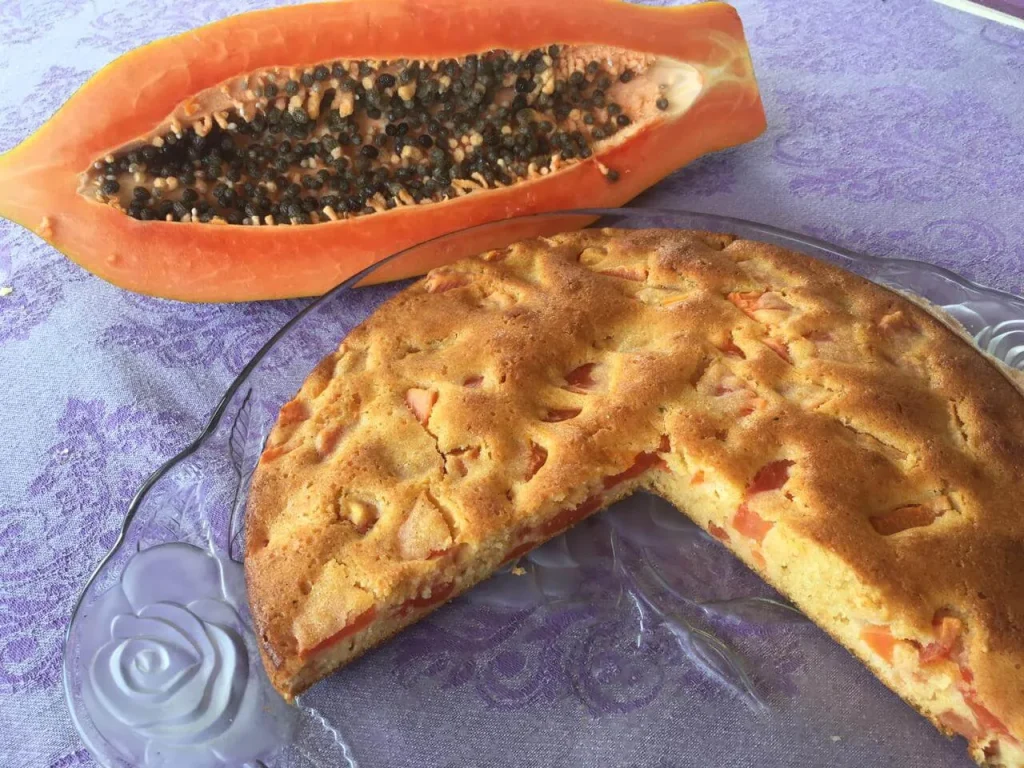The Best Fluffy Pancakes recipe you will fall in love with. Full of tips and tricks to help you make the best pancakes.
If you’re looking for a fresh and fruity twist on classic cakes, papaya cake is a delightful choice that’s both delicious and easy to make. Papaya, with its naturally sweet and tropical flavor, adds a unique moistness and vibrant color to your dessert. This cake is perfect for beginners because it uses simple ingredients and straightforward steps—no fancy baking skills required!
Whether you have a ripe papaya waiting to be used or just want to try a new tropical fruit dessert, this quick and simple papaya cake recipe will become your go-to for a sweet treat that’s bursting with flavor. Plus, it’s a wonderful way to bring a bit of sunshine to your kitchen any time of the year.
Ingredients You’ll Need for Papaya Cake
Creating a delicious papaya cake starts with choosing the right ingredients. Luckily, this recipe keeps things simple and uses everyday pantry staples combined with fresh papaya to create a moist, flavorful cake that’s perfect for beginners.

Fresh Ripe Papaya: The Star Ingredient
The most important part of this recipe is fresh, ripe papaya. Choose papayas that are vibrant orange or reddish in color and slightly soft to the touch—this means they’re sweet and ready to use. If you’re unsure, give the fruit a gentle press; it should yield slightly without feeling mushy. The ripe papaya adds natural sweetness and moisture to the cake, making it tender and flavorful without needing a lot of extra sugar or fat.
Basic Baking Ingredients
Your papaya cake will also need the usual baking essentials, including:
- All-purpose flour: The base of your cake, providing structure and texture.
- Granulated sugar: Adds sweetness to balance the tropical flavor of papaya.
- Baking powder and baking soda: These leavening agents help your cake rise and stay fluffy.
- Eggs: Bind the ingredients together and add richness. If you prefer an egg-free version, you can substitute with applesauce or flax eggs.
- Butter or oil: Adds moisture and tenderness. Oil often makes the cake more moist, but butter adds a lovely flavor.
- Vanilla extract: Enhances the natural sweetness and complements the papaya flavor.
Optional Add-ins and Toppings
To elevate your papaya cake, consider adding or topping it with:
- Cream cheese frosting: A classic pairing that adds creamy tanginess.
- Chopped nuts (like walnuts or pecans): For crunch and texture contrast.
- Desiccated coconut or toasted coconut flakes: Enhance the tropical vibe.
- Spices like cinnamon or nutmeg: Warm up the flavor profile subtly.
By keeping your ingredients simple yet fresh, this papaya cake recipe ensures an easy baking experience with a delicious, crowd-pleasing result. Ready to gather your ingredients? Let’s move on to the step-by-step baking process!
Step-by-Step Guide to Making Papaya Cake
Baking a papaya cake is easier than you might think, even if you’re a beginner! Follow these simple steps to create a moist, flavorful cake that highlights the tropical sweetness of fresh papaya. Let’s break it down step-by-step.
📝 Papaya Cake Ingredients
- 1 ½ cups ripe papaya, mashed (about 1 medium papaya)
- 2 cups all-purpose flour
- 1 cup granulated sugar
- ½ cup vegetable oil (or melted butter)
- 2 large eggs
- 1 tsp vanilla extract
- 1 tsp baking soda
- ½ tsp baking powder
- ½ tsp ground cinnamon (optional, for warmth)
- ¼ tsp salt
- ½ cup chopped nuts (optional – walnuts or pecans work well)
- ½ cup shredded coconut (optional, for a tropical twist)
1. Preparing the Papaya for the Cake Batter
Peel, deseed, and mash the ripe papaya in a bowl until smooth. You can use a fork or, for a quicker and smoother result, a handheld immersion blender like the Ninja EasyGlide 750-Watt Immersion Blender. It makes the process faster and ensures a lump-free texture.
2. Mixing the Dry Ingredients
In a large bowl, sift together your flour, baking powder, baking soda, and a pinch of salt. Sifting helps to aerate the flour and ensures that your leavening agents are evenly mixed, which leads to a lighter cake. Set this mixture aside.
3. Preparing the Wet Ingredients
In another bowl, beat together the eggs and sugar until the mixture is pale and fluffy. This process helps to incorporate air into the batter, making the cake lighter. Then, add your melted butter (or oil) and vanilla extract, mixing well to combine all the wet ingredients.
4. Combining Wet and Dry Ingredients
Gradually add the dry ingredients to the wet ingredients, stirring gently with a spatula or wooden spoon. Avoid overmixing to keep your cake tender. Once the batter starts to come together, fold in the mashed papaya gently until it’s evenly incorporated.
5. Baking Your Papaya Cake
Preheat your oven to 350°F (175°C). Grease and flour your cake pan to prevent sticking, or line it with parchment paper for easy removal. Pour the batter into the pan, spreading it out evenly. Bake for about 30-40 minutes or until a toothpick inserted into the center comes out clean. Oven times can vary, so start checking at the 30-minute mark.
6. Cooling and Optional Frosting
Once baked, allow the cake to cool in the pan for about 10 minutes, then transfer it to a wire rack to cool completely. If you like, you can frost your papaya cake with a simple cream cheese frosting or dust it lightly with powdered sugar for a more minimalist touch.
Tips for Baking the Perfect Papaya Cake
Baking a moist and flavorful papaya cake is easier when you follow a few simple tips and tricks. These pointers will help you avoid common pitfalls and ensure your cake turns out soft, tender, and delicious every time.
1. Use Ripe Papayas for Maximum Flavor and Moisture
The key to a great papaya cake is using ripe, juicy papayas. Unripe papayas can be bitter and won’t provide the natural sweetness and moisture needed for the cake. Look for papayas with orange or reddish flesh that give slightly under gentle pressure. Overripe fruit may be too mushy, so aim for that perfect ripeness balance.
2. Don’t Overmix the Batter
When combining wet and dry ingredients, mix just until everything is incorporated. Overmixing develops the gluten in the flour, which can lead to a dense, tough cake rather than a soft, tender crumb. Gentle folding of the batter will keep your cake light and fluffy.
3. Measure Ingredients Accurately
Baking is a science, so precise measurements are important. Use measuring cups and spoons for dry and wet ingredients to avoid imbalance—too much flour can make the cake dry, while too much sugar or fat can affect texture and taste.
4. Proper Oven Temperature and Timing
Preheat your oven before baking to ensure even cooking. Bake your papaya cake at 350°F (175°C) as recommended, but since ovens vary, start checking the cake’s doneness at around 30 minutes. Insert a toothpick or cake tester into the center; it should come out clean or with just a few moist crumbs. Avoid opening the oven door frequently during baking to prevent temperature fluctuations.
5. Let the Cake Cool Completely Before Frosting
If you’re planning to frost your papaya cake, patience is key. Frosting a warm cake can cause the frosting to melt and slide off. Let your cake cool completely on a wire rack to room temperature before adding any frosting or toppings for the best results.
6. Experiment with Add-Ins and Flavor Enhancers
To personalize your papaya cake, try adding spices like cinnamon or nutmeg for warmth. Nuts such as walnuts or pecans add a pleasant crunch, while shredded coconut enhances the tropical theme. These small touches can elevate the cake and make it uniquely yours.
Serving Suggestions and Variations
Once you’ve baked your delicious papaya cake, it’s time to think about how to serve it and ways to make it even more exciting! Whether you’re hosting a casual get-together or just enjoying a slice at home, these ideas will help you elevate your papaya cake experience.

1. Creative Frosting and Topping Ideas
While the natural sweetness of papaya makes the cake delightful on its own, adding frosting or toppings can take it to the next level. Cream cheese frosting pairs beautifully with papaya’s tropical flavor, adding a rich, tangy contrast. For a lighter option, try dusting the cake with powdered sugar or a simple glaze made from powdered sugar and fresh lime juice. You can also sprinkle toasted coconut flakes or chopped nuts on top for added texture and flavor.
2. Pairing Papaya Cake with Tropical Fruits and Beverages
To enhance the tropical vibe, serve your papaya cake alongside other fresh fruits like pineapple, mango, or kiwi. A fruit salad with a splash of lime juice complements the cake’s sweetness perfectly. For drinks, consider pairing it with iced herbal teas, coconut water, or a refreshing mango smoothie to keep things bright and fresh.
3. Variations to Suit Your Dietary Preferences
Papaya cake is versatile and can be adapted to suit various dietary needs. For a gluten-free version, substitute all-purpose flour with a gluten-free baking blend. If you’re vegan or avoiding eggs, use flax eggs or applesauce as an egg replacement, and swap butter for coconut oil or vegan margarine. You can also reduce the sugar or substitute it with natural sweeteners like honey or maple syrup for a healthier twist.
4. Presentation Ideas for Special Occasions
For birthdays or celebrations, transform your papaya cake into a layered cake with frosting between each layer and decorative fruit toppings. Use edible flowers or fresh mint leaves for a stunning presentation that impresses guests. Even a simple slice served on a pretty plate with a scoop of vanilla ice cream can make dessert feel special.





